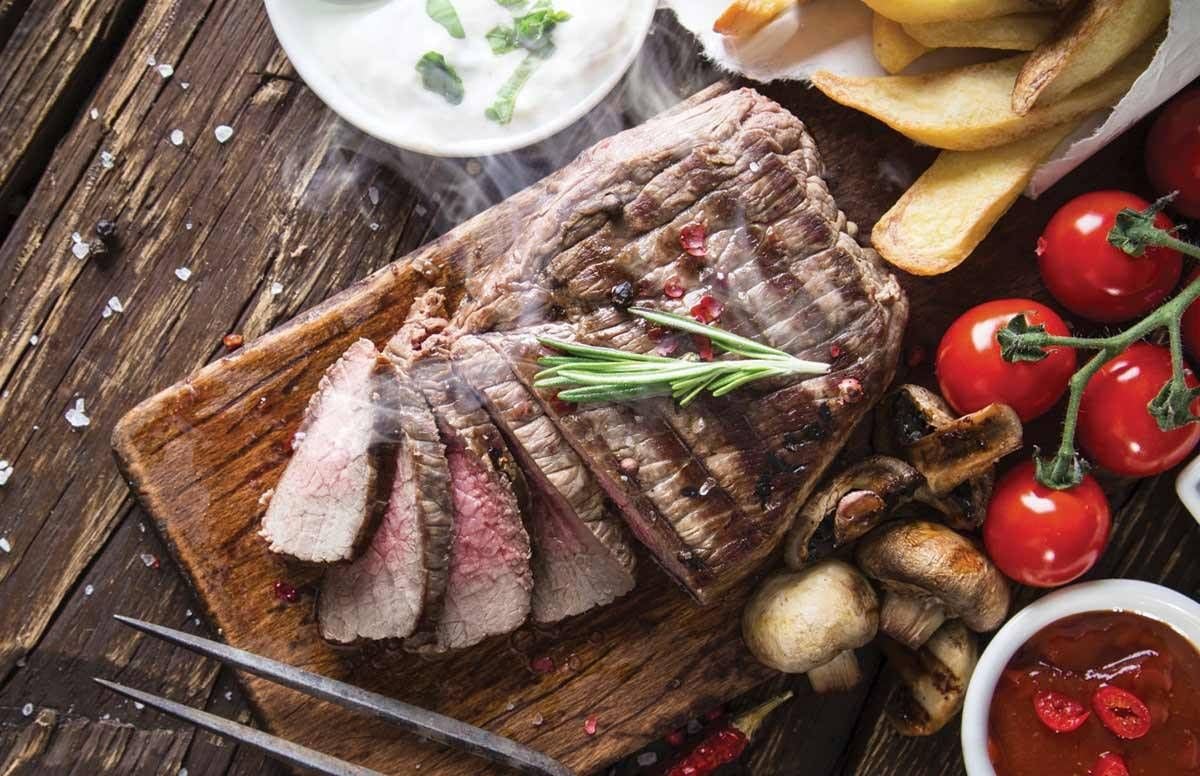A Dangerous Health Problem No One Talks About
The risk increases with age, but there are ways to prevent it
You're sitting down to enjoy a nice steak at your favorite restaurant, maybe sipping a little wine. Suddenly a piece of meat gets stuck in your throat. It's not enough to block your breathing, so you're not quite choking —but you also can't get it down. You excuse yourself and go to the restroom, hoping you can dislodge the food by either coughing it up, inducing vomiting or drinking water.

Called "steakhouse syndrome," this common scenario can lead to death if you take matters into your own hands this way, says Dr. Robert Glatter, emergency physician at Lenox Hill Hospital, N.Y., and assistant professor at Hofstra Northwell School of Medicine.
"Anecdotally, a large number of people who suffer from steakhouse syndrome, and who succumb to its dangerous complications, are found dead in restaurant restrooms," Glatter says. He notes that people often feel self-conscious or embarrassed and fearful when they can't get their food down,and then excuse themselves to attempt to clear the blockage on their own. "This is the biggest mistake, and it can cost you your life," he says.
"If you experience steakhouse syndrome, remain calm and let others around you know the food is not going down. This is not a time to feel self-conscious or embarrassed," notes Glatter.
By definition, steakhouse syndrome is a general term used to describe a food impaction in the esophagus, says Dr. Hardeep Singh, gastroenterologist with St. Joseph's Hospital in Orange, Calif.
"It's typically a big piece of meat or bread, and it usually passes. But it presents a problem if it doesn't pass — then the person should get to the ER," he says.
Causes and Risk Factors
The risk of getting food stuck in your esophagus increases with age, which may be for several reasons, says Singh.
"It's more common with increased body weight, which often occurs as we get older, and acid reflux, the latter of which causes irritation and a narrowing of the esophagus. In addition, the contractions of the esophagus become less vigorous with age," Singh says. A lowered mucus production and some medications could predispose a person to acid reflux (GERD), he adds.
People who experience steakhouse syndrome are often diagnosed later with an abnormality called Schatzki's ring, thickened tissue at the lower end of the esophagus from GERD, says Glatter. This ring acts like a speed bump in the esophagus. It also may be associated with inflammatory conditions such as eosinophilic esophagitis, strictures or even cancer of the esophagus.
Alcohol can be a factor, since you may not be paying as close attention to the size of the piece of meat you're eating or you may be eating too fast if you're under the influence, says Singh. The most common problematic foods include dry turkey and well-done steak.
Prevention and Treatment
It's important to take immediate action, since "waiting it out" could cause a perforation of the esophagus, which is life threatening, says Singh. "If you feel something stuck in your throat, try taking small sips of water or drink a carbonated beverage, which can also help. If that doesn't work, go to the ER."
People who recurrently experience "food sticking" or who have had steakhouse syndrome need to be evaluated by a gastroenterologist, says Glatter. "A gastroenterologist can perform an endoscopy [a nonsurgical procedure used to examine a person's digestive tract] to evaluate for any conditions that can lead to obstruction of the lower esophagus." Glatter has firsthand experience with steakhouse syndrome, having suffered from it himself.
In general, especially if you're prone to this syndrome, preventive measures include eating smaller pieces of meat and chewing slowly. Be sure to chew your food completely, says Glatter, "and drink copious amounts of water with your meal."
If you notice someone else having difficulty, it's imperative to alert people and staff at restaurants to call 911. Do not attempt the Heimlich maneuver, since that can lead to perforation if enough pressure has built up in the esophagus, Glatter adds.
What Not to Do
The main risk of steakhouse syndrome is aspiration of the food into your lungs, since people often try to induce vomiting to clear the obstruction. "It's dangerous to induce vomiting because this can lead to perforation if enough pressure builds up in the lower esophagus," says Glatter. "And don't try to gulp large amounts of water in an attempt to clear the obstruction as this can increase pressure in the esophagus and may also set you up for aspiration of contents to the lungs if you start vomiting."
Past treatments involved under-the-tongue nitroglycerin to relax the esophagus to allow the food to pass, but that has been generally ineffective. Endoscopy is now considered the treatment of choice, says Glatter.

